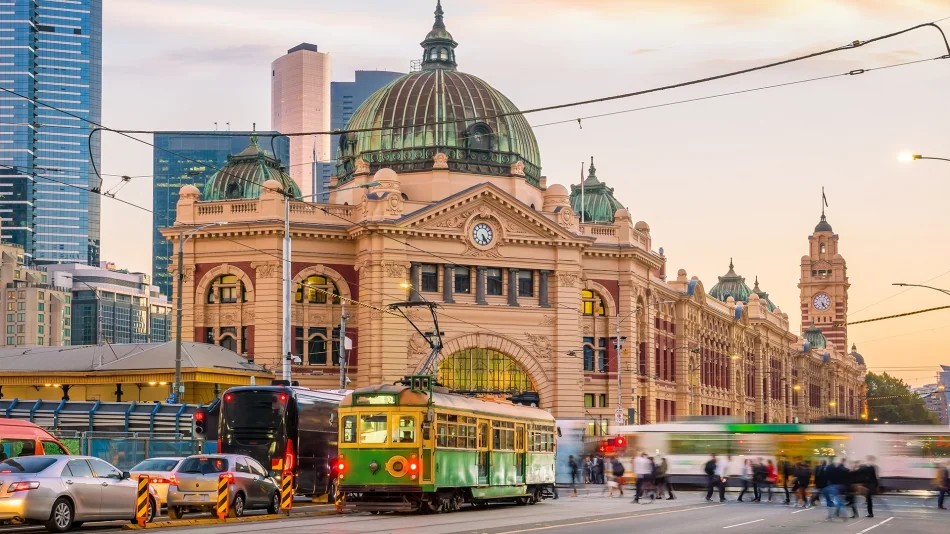In an unassuming rumpus room, model rail enthusiast Peter Michalak has been working for more than a decade on a mammoth project that has cost him tens of thousands of dollars and caused him to suffer “lots of” burnt fingers.
He estimates it will “easily” take him at least another 10 years to finish the intricate and nostalgic recreation of the broad gauge train line that once ran from Adelaide to the Victorian town of Serviceton.
The conversion to standard gauge in the 1990s permanently cut off many of the historical stations and train lines from the wider metropolitan and interstate network.
Mr Michalak’s model stretches across 200 metres of track that winds up, down and around the inside of his rumpus room in suburban Adelaide.
The project had its genesis in 2013, when Mr Michalak and a group of friends decided to recreate and exhibit a scene depicting the railway station, mill and surrounds of the Adelaide Hills town of Bridgewater.
It won many awards, but Mr Michalak said in 2016 he and his wife Sarah decided they had had enough of lugging it to shows and to make it part of a home layout.
“We brought the house with the biggest rumpus room we could find.”
Over time Port Adelaide, the Mile End railyards and country stations like Mount Lofty and Tailem Bend were added.
Serviceton, the border station which historically was a changeover point for Victorian and South Australian train crews on the interstate line, is still to be built but there’s space allocated for it.
So how much has it cost so far?
“Please don’t ask,” Mr Michalak said.
“Just locomotives and rolling stock, there’s at least $20,000 worth of stuff on there. That’s not including the track, or the scenery, or the bench work.
“It gets expensive, fast. Very, very fast.”
In the family
The love of railways has been passed down through the generations of his family.
His grandfather started his working life as a porter at the Tailem Bend station, one of those lovingly recreated on the line.
Mr Michalak got his first electric train set at the age of three.
To put himself through university he worked as a provisioner at Adelaide’s Keswick Terminal where the Ghan and the Indian Pacific stop.
In addition to his day job, he’s also operations manager at the tourist heritage railway Steamranger, which could be described as a life-sized model railway for its enthusiastic volunteer operators.
His love of history is evident in the details of the layout.
Era-appropriate advertising signage, company names and even livery of the tiny CFS truck waiting to go at a level crossing, have been recreated as they would have been in the 1980s and 90s.
Mr Michalak has spent many hours researching the stations, buildings and liveries of the engines and carriages so his recreation is true to the years preceding the conversion of the broad gauge line in the 1990s.
The cars and trucks are of the era; Toranas and a green VB Commodore, the same as his childhood family car.
The buildings have been built from scratch by hand, and are meticulously faithful (as much as practicable) to how they would have been in the 1980s or 90s.
Swearing and burnt fingers
Mr Michalak said local history groups on Facebook had been invaluable to him, finding photographs and records not in libraries or museums.
“You just go, ‘Hey, I’m looking for x’ and people pull stuff out of their archives and you just go, ‘this is brilliant,'” he said.
Mr Michalak said he was a proto freelancer rather than a “full blown” prototype modeller, taking his favourite parts of something to make a facsimile of how it was in real life.
“Mile End was a massive yard. I modelled three tracks of it. You can’t do everything.
“I’d like to. Don’t have a big enough shed for it.”
The rumpus room is big enough for a desk for his four-year-old daughter Stephanie to tinker at, painting engines.
It also now houses 3D resin printers, which make it easier to create engines and carriages not available off-the-shelf.
He does still sometimes draw them out on a piece of brass to cut and solder the components.
“[There’s] lots of folding and bending and swearing and burnt fingers,” Mr Michalak said.
“It can be quite therapeutic.
“Building steam locomotives is a whole other story. They’re shocking.”
Thousands of people are expected to attend the annual Adelaide Model Railway Show next month and Mr Michalak said the number of South Australian groups was growing.
“The hobby’s in a really good place,” he said.
“We’ve got a really good group of friends that come round. We have running days and, just more talking rubbish and drinking beer, but you know, a good social event anyway.
“It’s a good hobby to get. Great social hobby.”
ABC Adelaide

